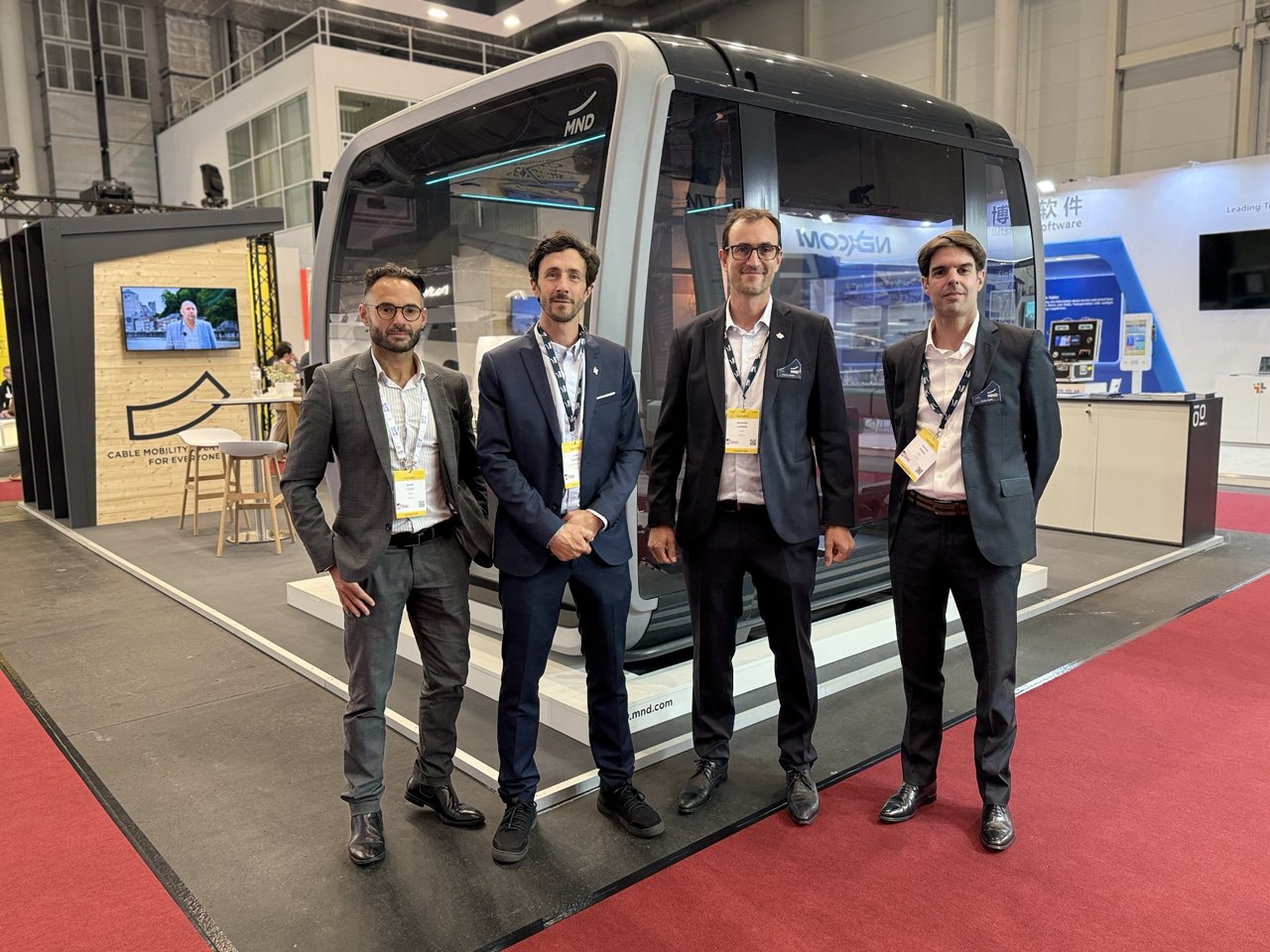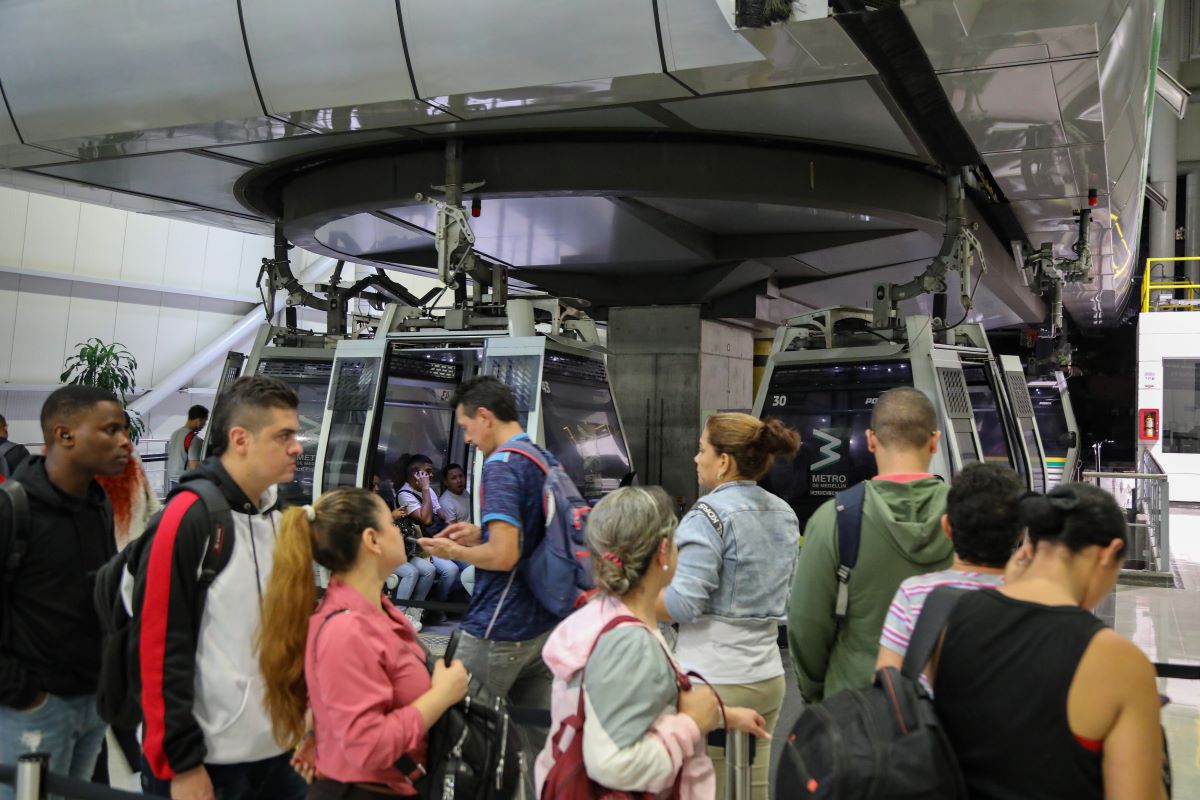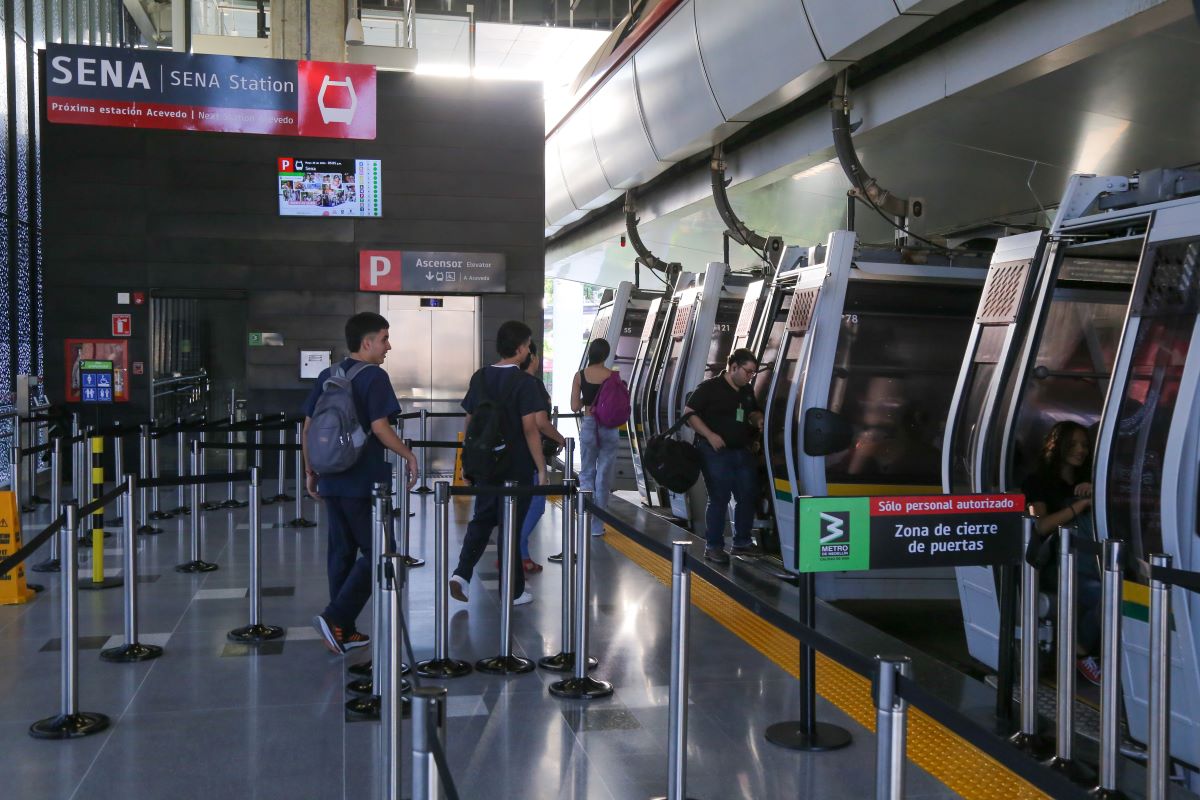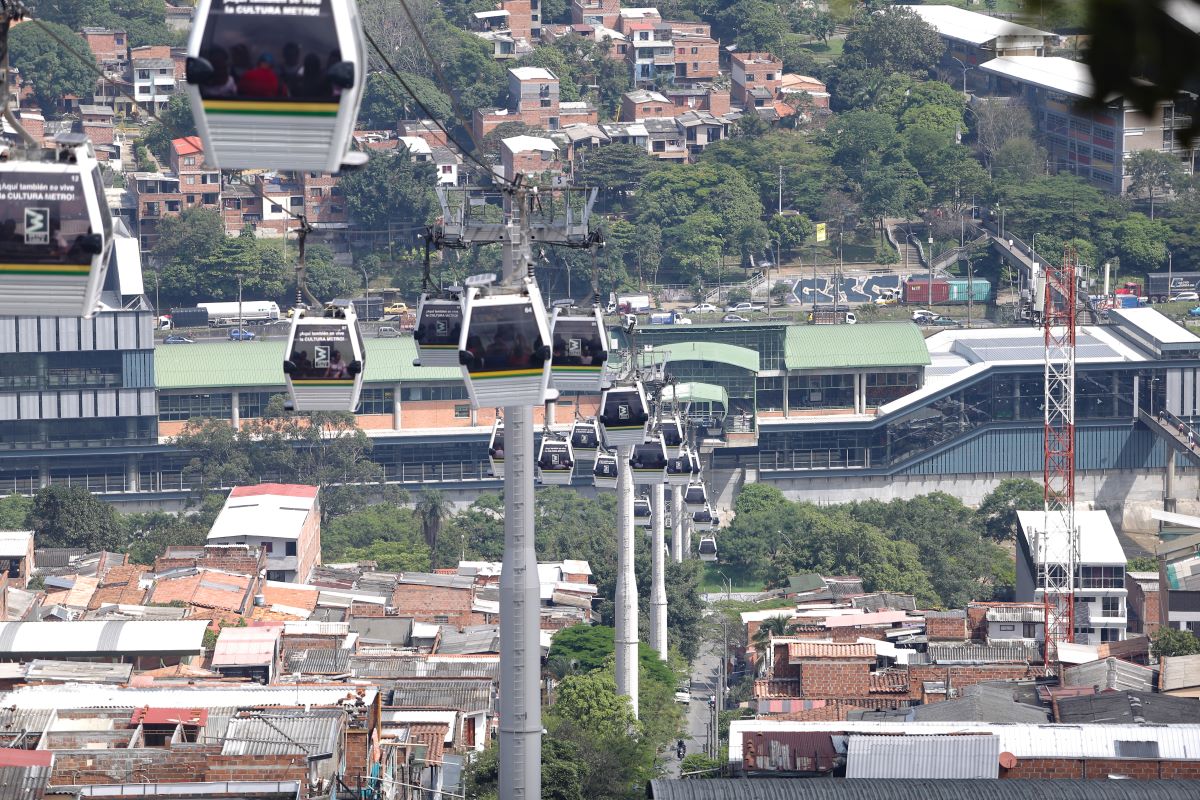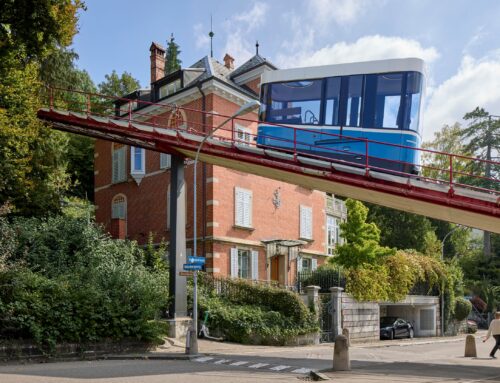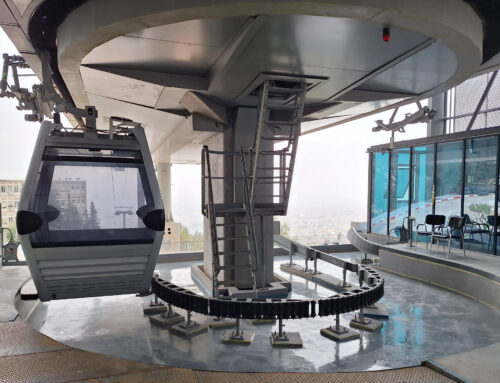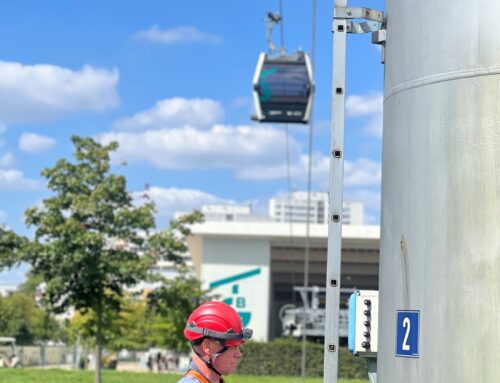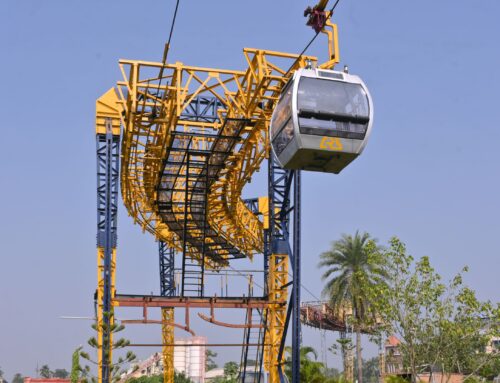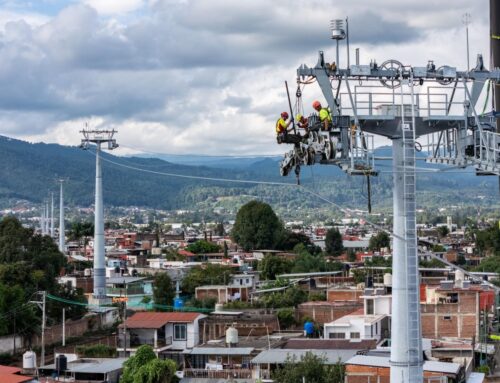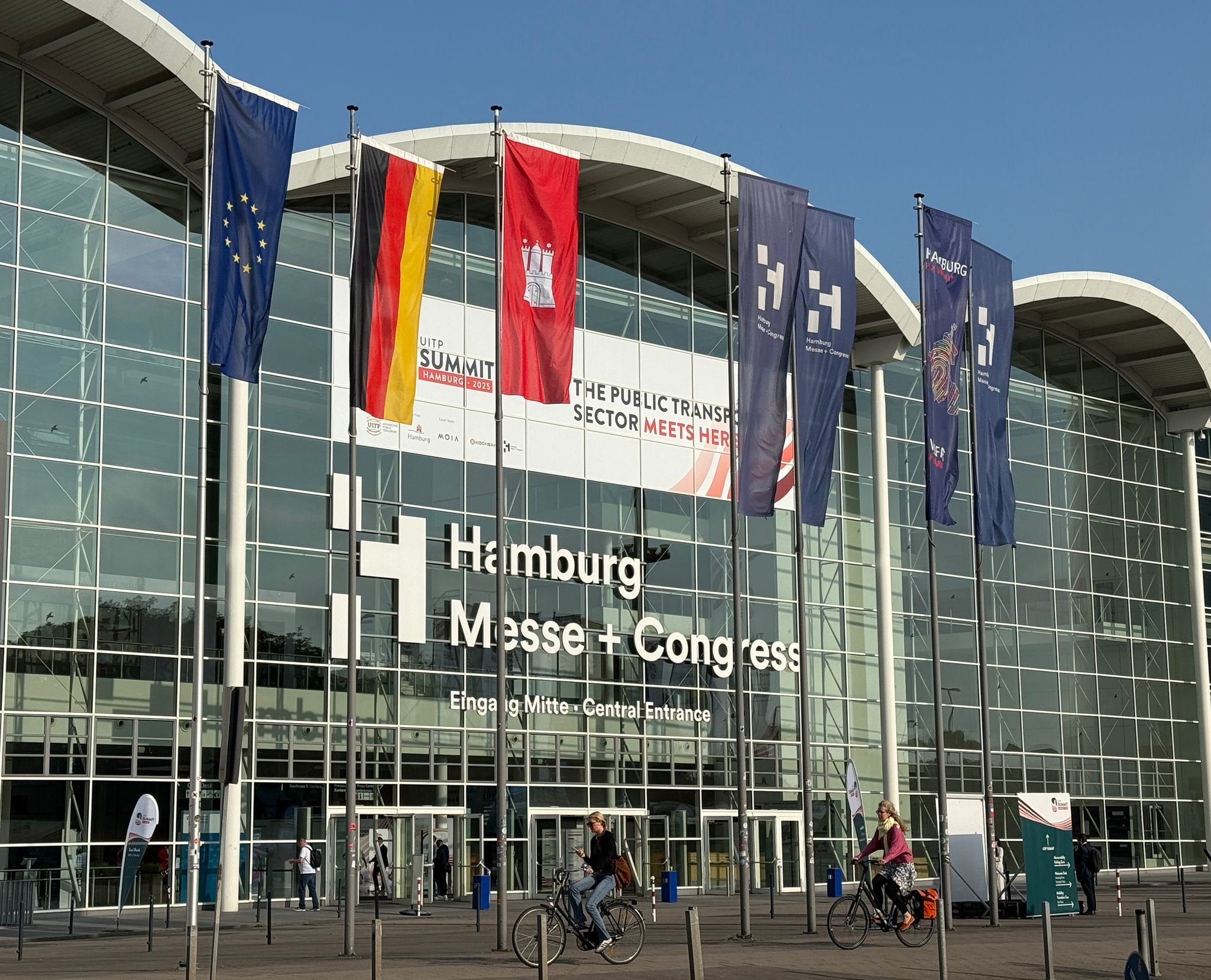
Cities
Europe, Colombia, China & Co.: Urban Cable Cars at the UITP
From June 15 to 18, 2025, the UITP Summit took place in Hamburg – bringing together over 10,000 public transport professionals from more than 100 countries to exchange ideas, learn from each other, and gain fresh insights. The topic of urban cable cars was represented both by delegations from various countries and by manufacturers.
Germany: Still on the way to urban cable cars
The session titled “Cable Cars: A Realistic Solution for Urban Transport?” was opened by Dominik Berndt, CEO of Cable Car World GmbH. He began with a candid question: Why is it so difficult to bring cable cars into cities in Europe – and especially in Germany? According to Berndt, there are several reasons:
- No standardized planning process – everyone is still a pioneer.
- A complex landscape of interests – unclear rules and possibilities.
- Uncertain integration into public transport systems – especially in models with private operators.
- High expectations meet limited experience – momentum is at risk due to the lack of know-how.
In the photo:
- Marie Cleuet, Consulting Manager, Systra
- Tomás Andrés Elejalde Escobar, General Manager of Metro de Medellín, Colombia
- Lei Wei, General Manager of the Cableway Division at Chongqing Public Transport Operation Co., Ltd.
- Dominik Berndt, CEO of Cable Car World GmbH
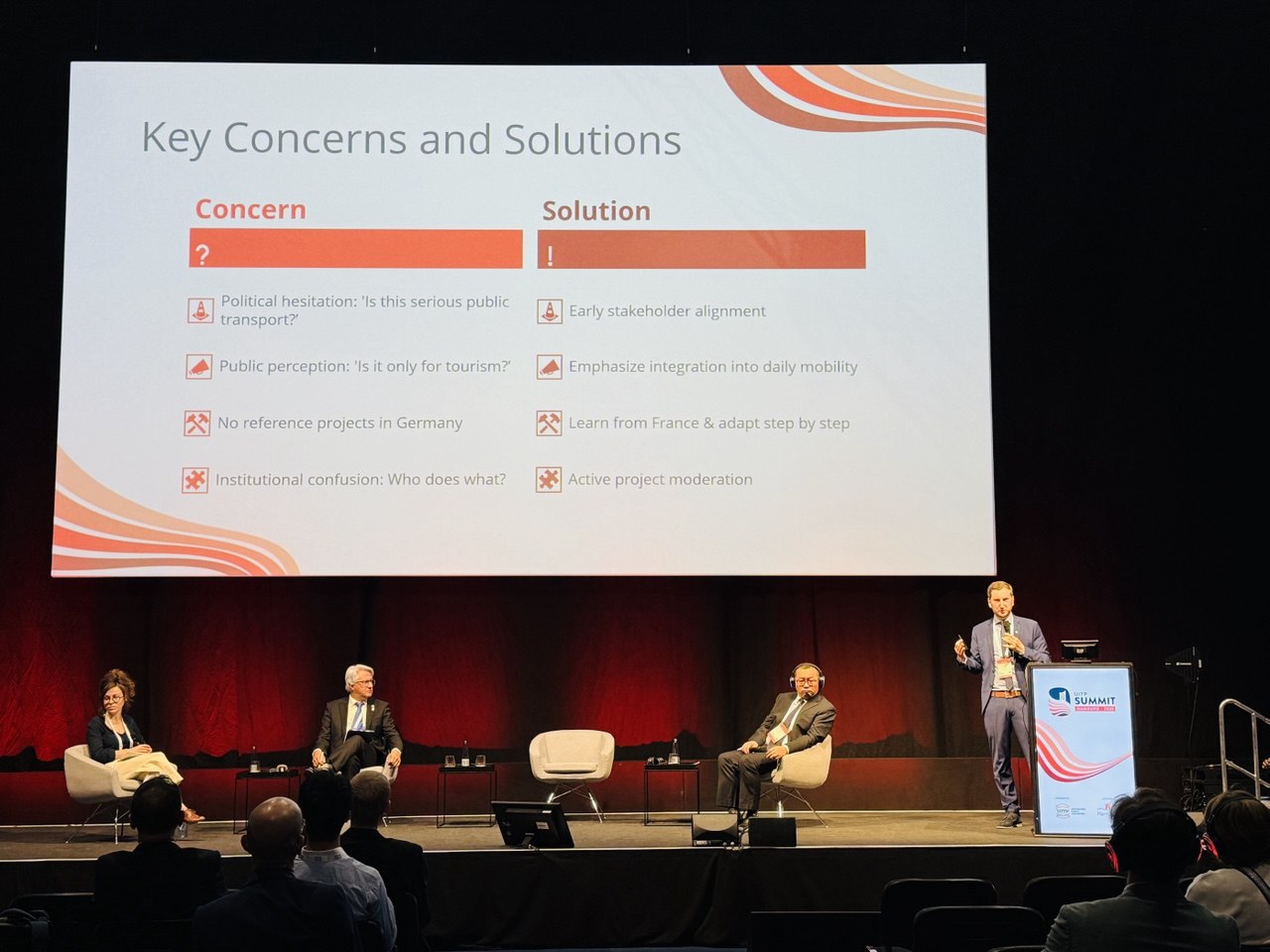
One possible solution to these challenges: early coordination among all stakeholders, a strong emphasis on integration into daily mobility, and learning from the experiences of successful projects – all supported by a national regulatory framework.
Medellín, Colombia: A changing maintenance approach
Following the session, Tomás Andrés Elejalde Escobar, General Manager of Metro de Medellín (Colombia), presented the Metrocable project – a cable car system that has been successfully operating and continuously evolving since 2004.
In Medellín, the cable car complements the city’s metro system. It was designed to provide access to hard-to-reach informal settlements located on the city’s steep hillsides. Between 2004 and 2021, six lines were put into operation, and today, they are used daily by thousands of people.
Regarding the challenges the city has faced over the years, Elejalde Escobar emphasized that urban cable cars require significantly more complex maintenance routines compared to tourist cable cars. In Medellín, the cable car system operates about 350 days a year, with a daily operating time of 19 hours.
Moreover, over time, the types and scope of maintenance on Line K, the first line opened in 2004, have evolved (see chart below).
Operation and Maintenance of the First Metrocable Line in Medellín
Presentation slide by Tomás Andrés Elejalde Escobar, General Manager of Metro de Medellín.
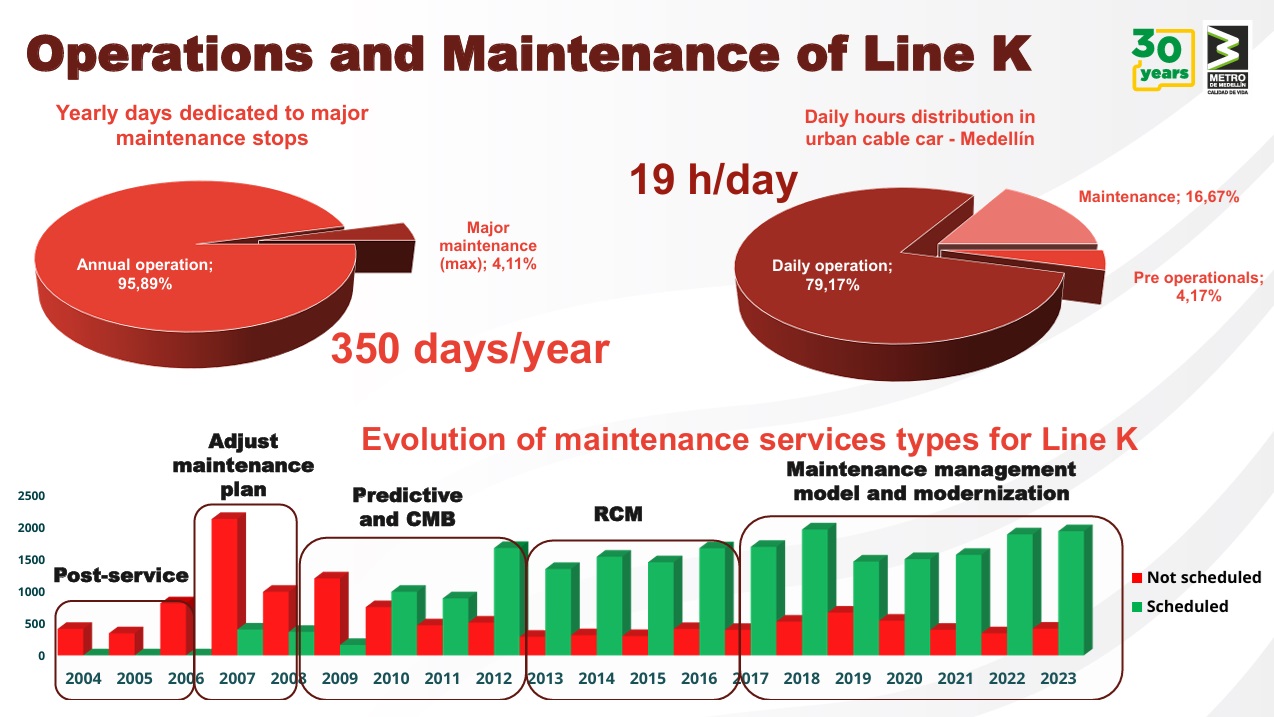
China: Morning commute, afternoon tourism
The Chinese megacity Chongqing shared its experience at the UITP on how an originally only urban cable car now successfully serves a dual purpose – both for everyday commuting and tourism.
China’s first cable car system entirely developed, built, and operated domestically was opened back in 1987. Since then, it has been transporting passengers daily between several districts across the river – and has been popular from the very beginning.
However, the city administration wanted to unlock the system’s full potential and has been specifically developing it for tourism purposes since 2014. Today, it is considered one of Chongqing’s highlights, offering visitors a unique experience: a spectacular ride over the river – passing between skyscrapers.
-2.jpg)
The cable car in Chongqing:
- Total length: 1,166 meters
- Height difference: 47 meters
- Operating speed: 6 m/s
- One-way travel time: approx. 4 minutes
- Cabin capacity: 65 passengers + 1 operator
- Designed one-way transport capacity: 12,000 people per day
Paris: A flagship project for Europe
The urban cable car in Paris, scheduled to open in December 2025, attracted great attention at the UITP, especially from European industry representatives.
The project is currently in the final assembly phase. Initial testing and adjustment work on the system is underway, followed by trial runs and official approvals. The first cabins are already on the route and have completed several trips.
The manufacturer, the Doppelmayr Group, describes the project as a role model for precise planning and seamless integration into existing transport structures.
The Doppelmayr Team at UITP:
Martina Leitner, Wolfram Auer, Reinhard Fitz, Benedikt Prinzing.
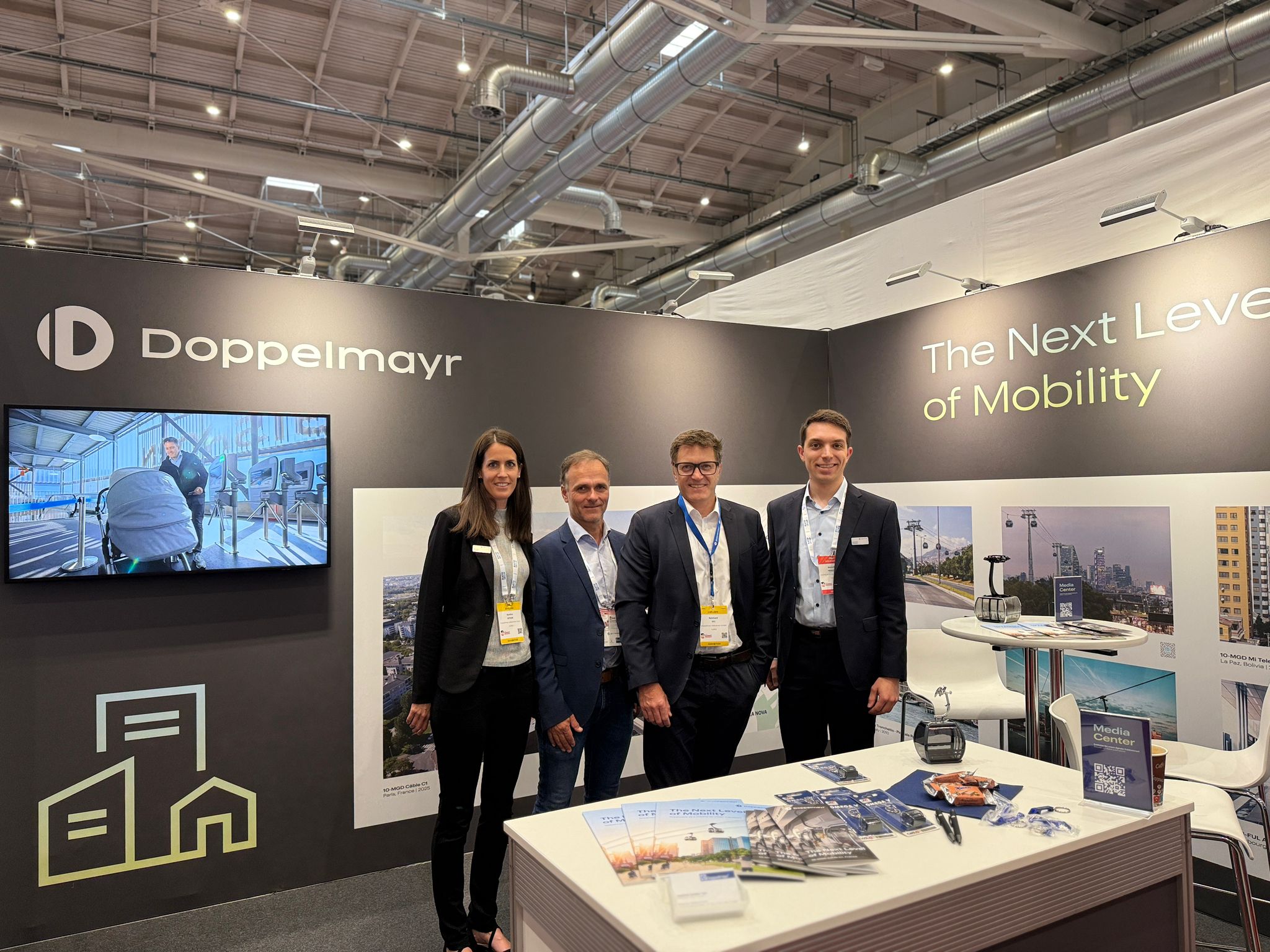
“The cable car in Paris impressively demonstrates that it’s not just the system itself that matters, but seamless integration into the overall mobility system. Public transport needs reliability, integrated processes, and barrier-free accessibility to remain attractive. This has been excellently achieved in Paris,” explains Reinhard Fitz, Head of International Business Development at Doppelmayr Seilbahnen GmbH.
He emphasizes the importance of keeping the big picture in mind and being open to various possibilities:
“This is my message to all public authorities, transport institutions, and clients commissioning transport analyses and studies: Be open to all options so that no opportunities for the future are blocked or fundamentally excluded, even if they might be possible. A comparison of different options should always be possible.”
HTI Group: Concept for urban cable car cabins
POMA and LEITNER jointly presented a new concept for urban cable car cabins. At their booth, a version of the “Diamond” model was on display – this time in an urban design for 16 passengers.
“Normally, 10-passenger cabins are used in urban applications,” explains Matthias Nothdurfter from LEITNER’s marketing team. “But this model is something special and clearly demonstrates how flexibly cabins can be adapted for urban environments.”
A practical feature: the seats can be folded up to create space for wheelchairs, bicycles, or strollers. Despite the increased width, the cabin remains suitable for monocable ropeway systems.
The HTI Group at UITP:
Carole Mancini, Matthias Nothdurfter, Guillaume Ployon, Fabien Felli, Arnold Rieder, Benjamin Fauchier-Delavigne.
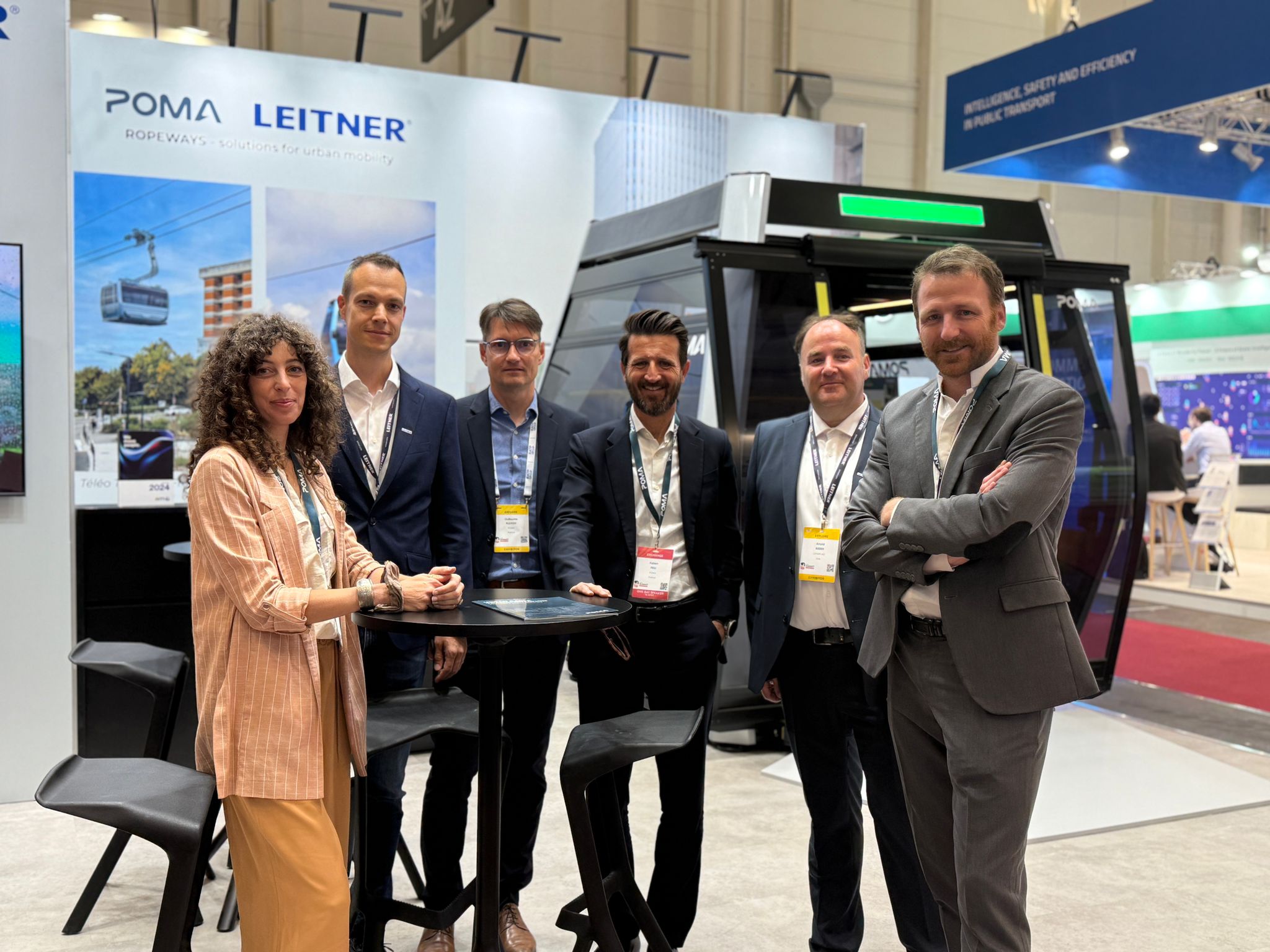
MND: Debut at UITP
The French industrial group MND participated with its own booth at the UITP exhibition for the first time this year. The company showcased a 20-seat cabin suitable for both urban transport and tourist use.
The cabin is equipped with information screens that display important passenger information. Wide sliding doors facilitate easy boarding and alighting, making it especially practical for urban environments.
“We see great potential in the urban sector,” says Xavier Marcou, Head of Marketing and Communications at MND. “Of course, mountain regions remain important to us – they are part of our DNA. But cities are facing increasing challenges such as limited space and heavy traffic. Cable car systems can be a valuable complement here.”
The MND Team at UITP.
The French company participated with its own booth at the UITP exhibition for the first time this year.
